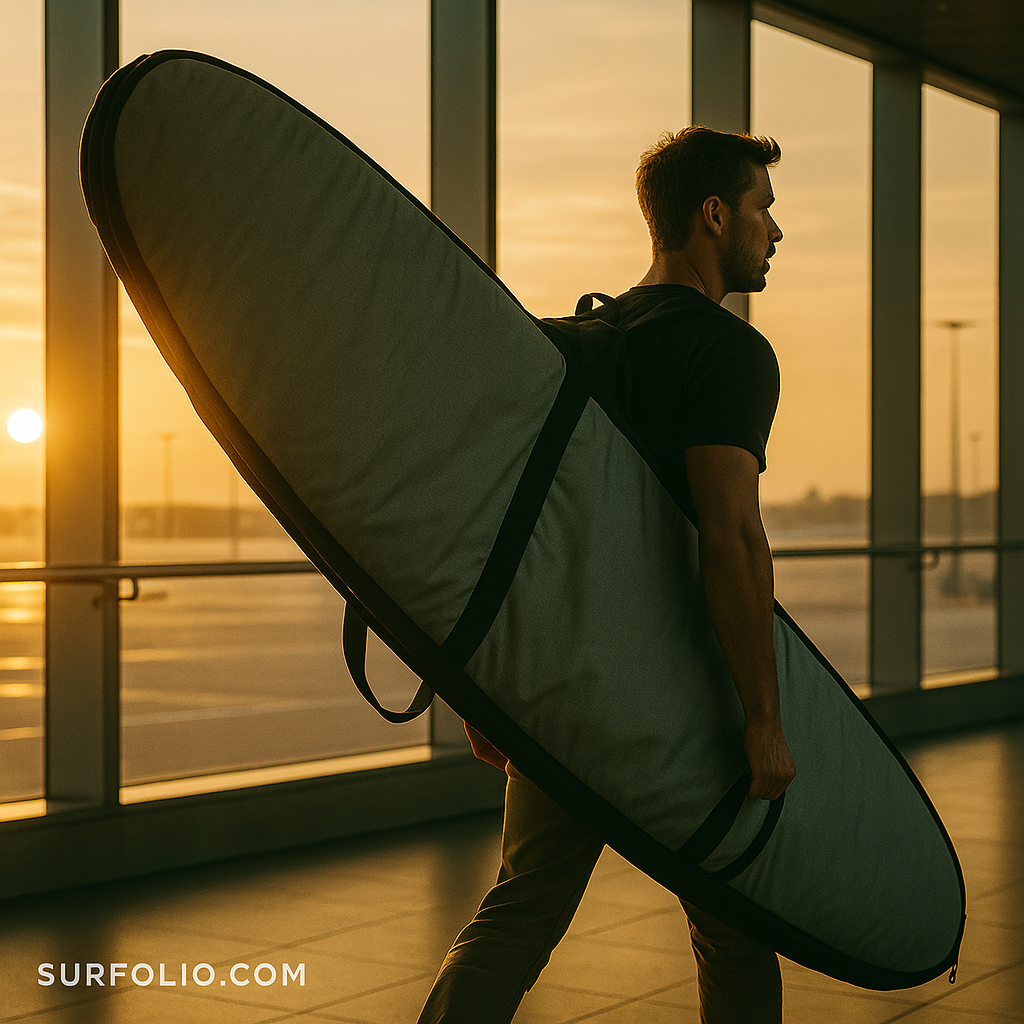
Surf trips are the ultimate adventure—new waves, new cultures, and endless stoke. But getting your surfboard safely to your destination can be one of the most nerve-wracking parts of the journey. Between airline policies, baggage handlers, and potential dings, it’s no surprise surfers joke that traveling with boards is a contact sport in itself.
Here’s how to travel with your surfboards hassle-free, from packing and flying to arriving ready to surf.
1. Choose the Right Travel Board Bag
Your bag is your first line of defense. Don’t skimp here—it’s worth every cent.
Look for:
- Thick padding: At least 10mm of foam protection.
- Multiple layers: A sturdy outer shell (ripstop nylon) and soft interior lining.
- Extra space: Enough room for boards, fins, towels, and wetsuits for added cushioning.
- Shoulder straps and handles: Makes airport navigation easier.
Pro Tip: Go one size up from your longest board. That extra few inches gives room for padding and protection.
2. Pack Your Boards Like a Pro
Think of it as armor. The goal: no pressure dings or cracks, even after rough handling.
Step-by-step packing checklist:
- Remove fins and pack them separately.
- Wrap rails, nose, and tail with bubble wrap, foam pipe insulation, or pool noodles.
- Use clothes, wetsuits, or towels to fill gaps and add cushioning.
- Stack boards tail-to-nose, with soft material in between each.
- Add a “Fragile” sticker—it won’t guarantee care, but it can help.
Bonus Tip: Tape your bag’s zippers and handles for long trips—less chance of them breaking mid-flight.
3. Know Airline Surfboard Policies
Every airline has its own surfboard rules. Some are surf-friendly; others charge outrageous fees.
Examples of surfboard-friendly airlines:
- Qantas and Virgin Australia – No extra charge if within baggage limit.
- Southwest Airlines – Counts surfboard bag as regular checked luggage.
- Hawaiian Airlines – Flat surfboard fee with good handling record.
Always check weight and length restrictions before booking. Print or screenshot their policy in case of disputes at check-in.
4. Protect Your Board in Transit
Even the best-packed board can take a beating in airports. Here’s how to reduce risks:
- Use “Fragile” and “This Side Up” stickers.
- Ask staff to place the bag on the oversized or fragile belt.
- Avoid layovers—direct flights = fewer handlers = fewer risks.
- On arrival, inspect your board immediately for damage and report it before leaving the airport.
5. Use a Soft Rack or Travel Rack at Your Destination
If you’re renting a car, soft racks are a game-changer. They’re lightweight, packable, and fit almost any vehicle.
Pro Tip: Use a towel between the board and car roof to prevent wax melt or pressure marks in hot climates.
6. Have a Backup Plan
If traveling far or through regions with unreliable baggage handling, consider shipping your board ahead via surf freight services.
Or, if you’re not attached to your own quiver, rent high-quality boards locally—many surf destinations now offer premium rentals that match your specs.
7. Keep Essentials in a Carry-On
Never pack these in your board bag:
- Fin keys
- Sunscreen
- Surf watch or GPS tracker
- Small first-aid kit
- Wax (in checked luggage if solid, not soft or liquid)
If your boards get delayed, at least you’ll be ready to rent or borrow gear quickly.
8. After the Trip: Unpack and Inspect
When you’re home, unpack immediately. Salt and moisture trapped inside your board bag can cause corrosion and mildew.
- Rinse your board with fresh water.
- Check for new cracks or dings.
- Air out your bag before storing it.
Final Thoughts
Traveling with surfboards can feel daunting, but with the right prep and protection, it’s smooth sailing. Treat your board like a travel buddy—it’s carrying your dreams to waves you’ll remember for life.
Plan ahead, pack carefully, and paddle out with peace of mind wherever your next surf trip takes you.
